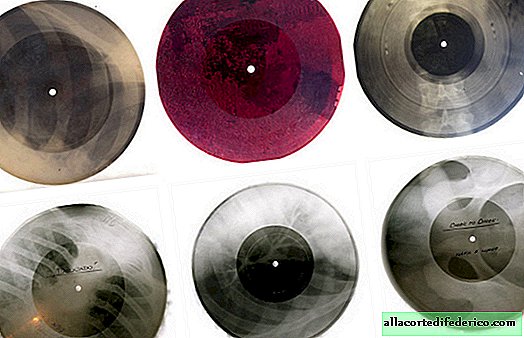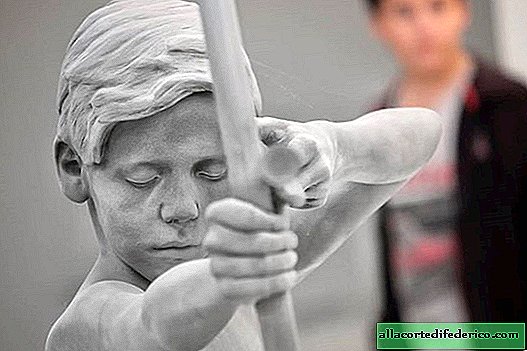Music on the bones: how in the USSR they recorded music on x-rays
During the Cold War in the USSR, the media were heavily censored, and many goods were banned. This list includes music and books. However, the dissidents did their job: many books were passed between readers secretly, while others corresponded by hand. And Soviet citizens even found a way to record music.
Then there were no cassettes, only vinyl records. It was very difficult to record music on them: a special machine was needed. Yes, and blank drives were expensive. Therefore, the music found a completely unexpected embodiment - it began to be recorded on x-rays. They were collected in trash bins, bought in hospitals and turned into records. From terrible pictures with broken bones and dislocated limbs sounded Elvis Presley, Beatles, Rolling Stones. And all of them were recorded on a machine, which was assembled independently.

The recorder looked like a phonograph, but worked in the opposite direction. Instead of a “needle” that read music on plastic, there was a cutting head scratching an empty rotating surface, where a sound signal was sent. Each recording was cut in real time, and its quality was influenced by everything from the age of the cutting head to the surface option and the type of music.

These discs were called differently: "jazz on the bones", "recording on the ribs", "music of bones." And if the first recordings sounded very high quality and it was difficult to distinguish them from the originals, then later, when the practice became widespread, the quality dropped significantly. Such a record did not work for long, the music could be played several tens of times, however, these forbidden melodies, even with many flaws, were exciting. Fakes were very cheap, not more than one and a half rubles.
With "jazz on the bones" actively fought, and in the late 1950s, special music patrols were even created. However, bone plates were popular for several more years until they were replaced by cassettes.

















